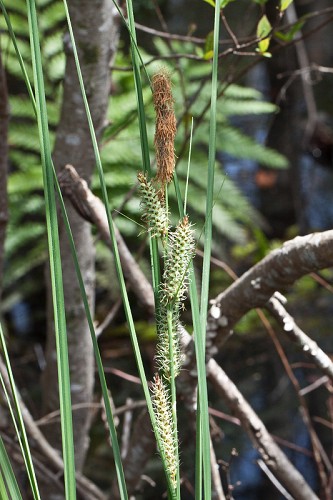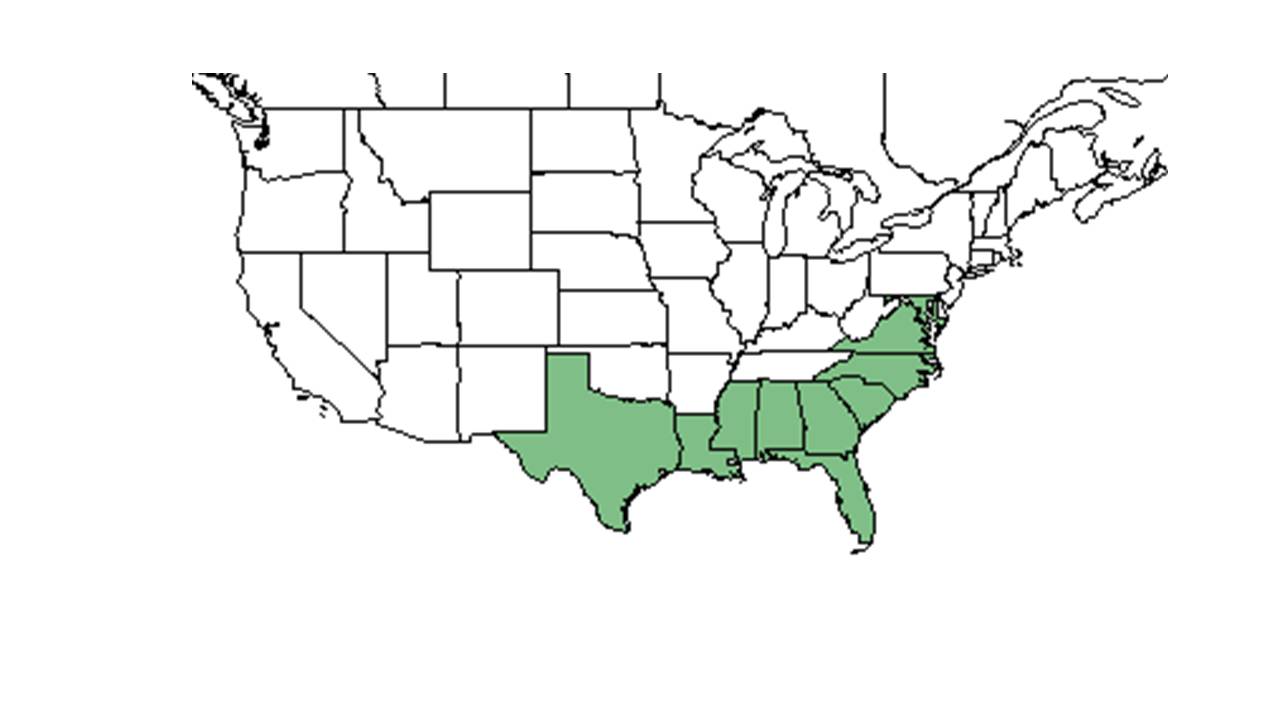Carex verrucosa
| Carex verrucosa | |
|---|---|

| |
| Photo by John R. Gwaltney, Southeastern Flora.com | |
| Scientific classification | |
| Kingdom: | Plantae |
| Division: | Magnoliophyta - Flowering plants |
| Class: | Liliopsida – Monocotyledons |
| Order: | Poales |
| Family: | Cyperaceae |
| Genus: | Carex |
| Species: | C. verrucosa |
| Binomial name | |
| Carex verrucosa Muhl. | |

| |
| Natural range of Carex verrucosa from USDA NRCS Plants Database. | |
Common name: Warty sedge
Contents
Taxonomic notes
Synonym: Carex glaucescens Elliott var. androgyna M.A. Curtis.[1]
Varieties: none.[1]
Description
A description of Carex verrucosa is provided in The Flora of North America.
Distribution
Carex verrucosa is endemic to the longleaf pine range.[2], distributed from southeast North Carolina south to Florida and west to Louisiana.[3]
Ecology
Habitat
Carex verrucosa are sedges that are almost restricted to wet savanna communities.[4] Thrives in wetland depressions in the southeastern coastal plain.[5] This species is found in sphagnum bogs in pine woods depressions, cypress ponds, and sweetbay-titi swamps. It is tolerant a range of light levels, from shady to sunny. It grows in sandy loam and peaty soils that are wet to saturated. Also found in roadside ditches.[6]
Associated species include Carex walteriana, Ilex myrtifolia, Lyonia, Panicum hemitomon, Polygala cymosa, Pontederia, Rhynchospora corniculata, Taxodium distichum, and others.[6]
Phenology
The inflorescence is arranged in a spike. It has superior ovaries. C. verrucosa has been observed flowering from February to July, and also in October and November with peak inflorescence in April and May.[7][6] The fruit is a nutlet.[3]
Fire ecology
Populations of Carex species have been known to persist through repeated annual burns.[8]
Conservation, cultivation, and restoration
Cultural use
Photo Gallery
References and notes
- ↑ 1.0 1.1 Weakley, A.S. 2015. Flora of the southern and mid-atlantic states. Working Draft of 21 May 2015. University of North Carolina at Chapel Hill, Chapel Hill, North Carolina.
- ↑ Sorrie, B. A. and A. S. Weakley 2001. Coastal Plain valcular plant endemics: Phytogeographic patterns. Castanea 66: 50-82.
- ↑ 3.0 3.1 [[1]]NatureServe. Accessed: april 12, 2016
- ↑ Walker, J. and R. K. Peet (1983). "Composition and species diversity of pine-wiregrass savannas of the Green Swamp, North Carolina." Vegetatio 55: 163-179.
- ↑ Edwards, A. L. and A. S. Weakley (2001). "Population biology and management of rare plants in depression wetlands of the southeastern coastal plain, USA." Natural Areas Journal 21: 12-35.
- ↑ 6.0 6.1 6.2 Florida State University Robert K. Godfrey Herbarium database. URL: http://herbarium.bio.fsu.edu. Last accessed: June 2014. Collectors: L. C. Anderson, J. R. Burkhalter, K. C. Burks, G. R. Cooley, S. Cooper, R. J. Eaton, A. Gholson, R. K. Godfrey, D. W. Hall, E. Keppner, L. Keppner, G. R. Knight, R. Kral, S. W. Leonard, D. L. Martin, S. McDaniel, R. A. Norris, A. Schmidt, G. Schultz, C. R. Slaughter, L. B. Trott, and C. E. Wood Jr. States and Counties: Florida: Bay, Calhoun, Clay, Columbia, Duval, Escambia, Franklin, Gadsden, Hamilton, Holmes, Jackson, Jefferson, Leon, Liberty, Marion, Polk, Suwannee, Taylor, Wakulla, Walton, and Washington. Georgia: Thomas.
- ↑ Nelson, G. PanFlora: Plant data for the eastern United States with emphasis on the Southeastern Coastal Plains, Florida, and the Florida Panhandle. www.gilnelson.com/PanFlora/ Accessed: 7 DEC 2016
- ↑ Robertson, K.M. Unpublished data collected from Pebble Hill Fire Plots, Pebble Hill Plantation, Thomasville, Georgia.